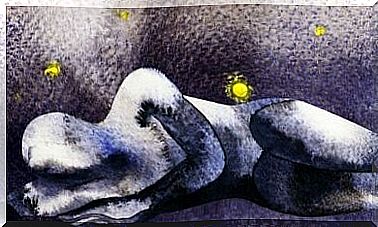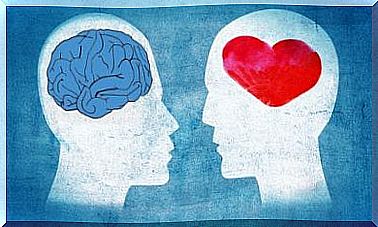Somatic Symptom Disorder: Symptoms And Treatment

Somatic symptom disorder sheds light on the difficulty of separating the effects that the body and mind have on a person’s health. The strong connection between these two dimensions prevents the diagnosis and treatment of disorders such as this.
Before we continue , it is important to distinguish them from psychosomatic disorders. Although both types have a psychological trigger with physical symptoms, psychosomatic disorders include damage to the physiological system, while symptoms of somatic symptom disorder do not have a demonstrated physical organic pathology. Therefore, there are somatic symptom disorders when there are physical symptoms without the presence of organic or physiological disorders. In addition, this symptomatology contains certain mental conflicts.
People with this type of disorder make their symptoms the focus of attention in their lives. Their discomfort can even absorb them in everyday life. However, in many cases, their concern is disproportionately related to their actual symptoms.
Excessive symptom enlargement
As we mentioned earlier , patients suffering from somatic symptom disorder show physical symptoms, but the origin is psychological. These come with high levels of worry, anxiety and difficulty in their daily activities. The following main points summarize their clinical picture:
- Excessive worry about their symptoms and / or intense emotional disturbance.
- Repetitive, constant and obsessive thoughts about the possible severity of the symptoms.
- Extreme anxiety about their health and the catastrophic consequences of their symptoms.
- A disproportionate amount of time and money spent on health problems.

Addiction
People may begin to develop an addiction to others caused by the chronicity of the physical symptoms and the belief that their grief will lead to catastrophic consequences. These patients generate a need to be cared for at all times. And then, on the one hand, they avoid their responsibilities, while on the other hand, they demand superfluous attention, help and support from the people around them.
In addition, they tend to get angry when they feel they are not getting the time or attention they feel they deserve or when their needs are underestimated. They may experience strong emotional volatility that can lead to suicide attempts in severe cases. Obviously, somatic symptom disorder can be very serious if not detected early.
Difficult discovery
What is the diagnosis for a number of disorders that do not show signs of physical disorder? The answer to this question lies in the psychological component of these disorders. And then, to diagnose them, “there should be no evidence of a somatic base explaining the symptoms” according to the DSM-IV.
Nevertheless, doctors should not diagnose this as a mental disorder when they do not find a physical cause for the symptoms. Before that , they should make sure to take the necessary samples.
Some people may also react excessively because they have a lower pain threshold than others. But that does not mean they have a mental illness. To diagnose this type of disorder, doctors must first rule out the possibility of other physical or organic disorders.

Different types of somatic symptom disorder
To categorize somatic symptom disorders, we must take into account the response that the patient has to the symptoms they experience. In other words, worry, anxiety and the degree of disruption that their ailments have in everyday life. Depending on these reactions, we can therefore distinguish between the following specific disorders ( DSM-IV and ICD-10):
- Somatization: usually detected after many years. The symptoms can manifest in any part of the body, but the most common are gastrointestinal (pain, meteorism, vomiting, nausea, etc.) and dermal (burns, tingling sensation, redness) problems. In some cases, we may also see signs of depression and anxiety.
- Undifferentiated: characterized by several physical disorders that are variable and persistent, but have no explanation. This means that their symptoms are not enough to establish a diagnosis of somatization.
- Hypochondriasis: Probably one of the better known types of somatic symptom disorder. Its main symptoms are worry and fear of developing or having one or many serious progressive diseases. The patient often categorizes the normal or frequent experiences as unique phenomena.
- Conversion: its symptoms manifest themselves in organs associated with the autonomic nervous system (cardiovascular, gastrointestinal or respiratory systems). Also in a combination of objective signs of hyperactivity (thumping, sweating, blushing and shaking) and other subjective and non-specific signs.
- Pain: characterized by intense pain that mainly manifests itself in conflict or problematic situations.
- Other: Sensitivity changes in somatic disorders and related to problems or stressful events. For example, episodes of hysteria or gnashing of teeth.
Cognitive behavioral therapy
Although there are studies on pharmaceutical treatment for pain, there is not enough scientific evidence to make viable therapeutic recommendations. However, patients should seek psychotherapy and especially cognitive behavioral therapy. This can help reduce the anguish and anxiety over their symptoms.
Another effective treatment may be an integrated focus on cognitive behavioral therapy and interpersonal therapy. This combination assesses the two main characteristics of patients with somatic tendencies: the exaggerated perception and evaluation of their health and the inadequate way in which they communicate their ailments to others.
This type of condition has a high incidence in our society. However, we must not obsess or worry. In some cases, the physical symptoms are a product of a mental condition. And so, as we stated at the beginning of the article, this is a result of the relationship between the mind and the body. The clear question that comes out of this is: where is the line that divides physical and mental symptoms?









